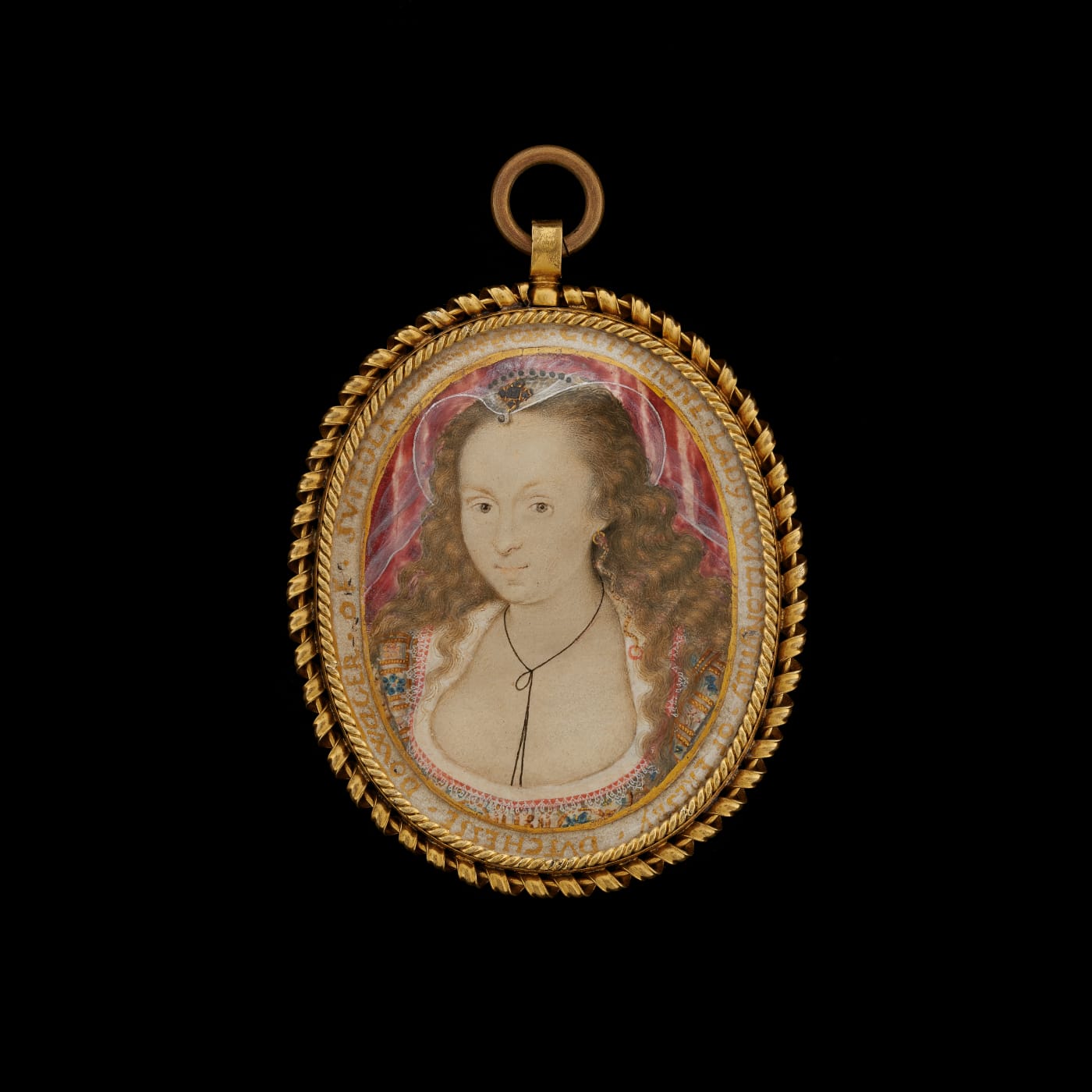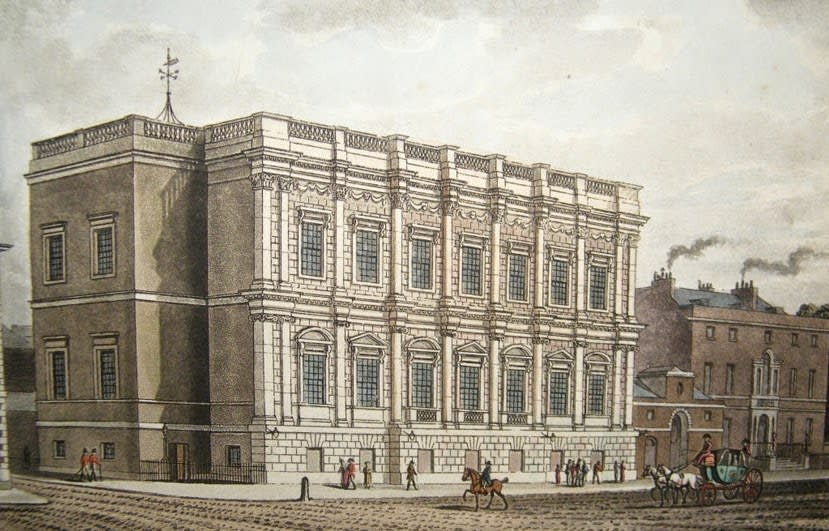Extravagant, expensive and exclusive, the masque was central to Jacobean court life. Untimately, masques provided entertainment, but frequently heeded a moral message. Often only a singular performance, they were a multimedia combination of dancers, singers, actors, designers, writers and artists. The importance of the masque meant that the designs were choreographed by the talented polymath Inigo Jones (1573-1652), who became Surveyor of the King’s Works in 1615. Playwright Ben Jonson (1572-1637) wrote many of the masques, many of which were also referenced in the plays of William Shakespeare (1564-1616). The combination of spectacle and words recalled the words of Horace that ‘poetry, and picture, are arts of a like nature’.
Jones’s masterminding of the masque led to an elevation in stagecraft and ultimately a Banqueting House was built specifically for performances. This was built at Whitehall Palace in 1608, but after its destruction by fire in 1619 it was replaced by the present building, designed by Inigo Jones and completed in 1622 [Fig.1]. The complex staging of the performances, which often included pyrotechnics and moving scenery, led to long delays for the audiences. The chaplain to the Venetian Ambassador wrote of his experience after attending a masque in 1618: ‘So crowded and uncomfortable that had it not been for our curiosity we would have given up or expired … every box was filled notably with the most noble and richly arrayed ladies… During the two hours of waiting, we had leisure to examine them again and again.’ Chaotic, congested, hot and often downright dangerous, the court masque was still the ultimate revelry.
A vital element of the court masque was the costumes worn by the performers, who were occasionally made up of the Queen and her courtiers. Here, Jones’s designs came to life, magically transforming the human form into the most fantastical beings [see figs 2/3]. As has been noted, ‘Most extravagant of all were the silks and other rich tissues worn by the masquers. At this time fabrics were disproportionately expensive luxury goods, so that the real costs of the performances were often carried on the masquers’ backs, the wealth embodied in their garments far exceeding the outlay lavished on other parts of the event’. Outside the court, masques were performed at some of the grander houses, where existing garments were altered to fit the role of the player. The sitter’s dress in Fig. 5 is a typical dress of the period, heavily embroidered with floral motifs, including forget-me-nots.
At hand to capture the moment when these costumes were donned, and the sitters could be fully immersed in their on-stage character was Isaac Oliver (c.1565-1617). Oliver was the perfect artist to reflect the stylistic shift at the court of Queen Anne, and in particular her son, Henry Frederick, Prince of Wales (1594-1612). While Oliver’s master Nicholas Hilliard represented English tradition and heritage, Oliver was inspired by new practices on the Continent, in particular Mannerist art and the school of Fontainebleau [Fig. 4].
Recently acquired by Philip Mould & Co. is this exquisite portrait by Oliver of a young girl in masque costume [fig.5]. The highly individual, likely enamelled jewel which falls from her left ear may be a reference to her role in ‘Anthony and Cleopatra’, which seems to have first been performed circa 1607. Around this time there was a strong tradition in drama and poetry of the conflict between a soldier’s duty and the distraction of a lover (hence the many versions of the ‘Anthony and Cleopatra’ story written and performed at this time). The layering of meaning in this miniature may never be fully understood by a modern audience but given that the primary purpose of portrait miniatures at this date was of a romantic intention, this theme would perhaps have been appropriate.
The sitter in this miniature also wears her hair loose around her shoulders, her gown cut low enough to expose most of her chest. The impropriety of this reflects both the private nature of miniatures, as gifts exchanged between lovers, and the play-acting in masques which allowed non-actors (even women) to indulge in costume considered highly inappropriate away from the stage. Although the circumstances around the commission of this portrait are unknown, the sitter is presented between reality and fantasy. Over four hundred years later, the true meaning behind this miniature remains a well-kept secret.
[1] Peacock, John. "Inigo Jones and Renaissance Art." Renaissance Studies 4, no. 3 (1990), p.246.
[2] The Cambridge Edition of the works of Ben Jonson Online: The Court Masque











